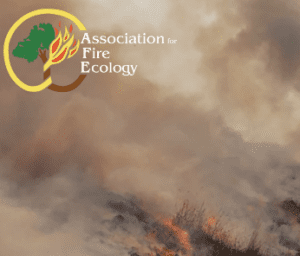Fire Ecology & Effects
View article.
Across the entire arthropod community, fire also had variable effects on community diversity. Fire tended to have a negative effect size on arthropods across life stages, but responses did vary among groups. Nearly all functional groups exhibited a negative response to fire with the exception of herbivores, for which abundance, diversity and richness increased after fire.
Visit conference website.
The Association for Fire Ecology (AFE) is excited to announce that the 10th International Fire Ecology and Management Congress will be held December 4-8, 2023 in Monterey, California at the Hyatt Regency Monterey Hotel. The Call for Proposals will open in January 2023.
Access tool.
Monitoring Trends in Burn Severity (MTBS) includes all fires 1000 acres or greater in the west and 500 acres or greater in the east. The extent of coverage includes the continental U.S., Alaska, Hawai’i and Puerto Rico. MTBS data are freely available to the public.
Access article.
High severity wildfires led to the greatest decrease in cover for all plant functional types, while low severity wildfires caused the least decrease in the functional type cover in most cases, though some variations existed. Furthermore, the impacts of wildfires on vegetation cover were greater in woody (SHR and TREE) types than in herbaceous (AFG and PFG) types. Significant negative correlation existed between percent changes in AFG and PFG cover and SPEI indicating higher prefire soil moisture conditions likely increased fine fuel loads and led to a larger decrease in AFG and PFG cover following wildfires. Significant positive correlation existed between percent changes in SHR and TREE cover and SPEI indicating drier prefire conditions resulted in larger decreases in SHR and TREE cover following wildfires.
View article.
We evaluated plant community succession following prescribed fire on Artemisia arbuscula var. arbuscula (low sagebrush) steppe in southeastern Oregon. Treatments were “prescribed burned” (burn; fall 2012) and “unburned” (control) low sagebrush a steppe, and the study design was a randomized complete block with 4 replicates per treatment. Herbaceous yield and vegetation canopy cover and density were compared between treatments (2012–2020). Fire practically eliminated low sagebrush and there was no recruitment of new plants in the first 8 years after burning. Herbaceous yield in the burn treatment was about double the control for most of the postfire period. Native perennial grasses and forbs constituted 94% to 96% and Bromus tectorum L. (cheatgrass) 0.2% to 2% of total herbaceous yield in the control. In the burn treatment, perennial grasses and forbs constituted 83% to 87%, native annual forbs 2% to 5%, and cheatgrass 3% to 9% of total herbaceous yield. Despite an increase in cheatgrass, the burned low sagebrush sites were dominated by herbaceous perennial grasses and forbs and exhibited high levels of resilience and resistance. After prescribed fire, for the study sites and comparable low sagebrush associations, weed control or seeding are not necessary to recover the native herbaceous community. However, the results in our study are for low-severity prescribed fire in intact low sagebrush plant communities. Higher-severity fire, as might occur with wildfire, and in low sagebrush communities having greater prefire invasive weed composition should not be assumed to develop similarly high levels of community resilience and resistance.
View article.
o examine the short-term effects of wildfire on belowground processes in the northern Sierra Nevada, we collected soil samples along a gradient from unburned to high fire severity over 10 months following a wildfire. This included immediate pre- and post-fire sampling for many variables at most sites. While season and soil moisture did not substantially alter pH, microbial biomass, net N mineralization, and nitrification in unburned locations, they interacted with burn severity in complex ways to constrain N cycling after fire. In areas that burned, pH increased (at least initially) after fire, and there were non-monotonic changes in microbial biomass. Net N mineralization also had variable responses to wetting in burned locations. These changes suggest burn severity and precipitation patterns can interact to alter N cycling rates following fire.
View factsheet.
2020 was a record year for wildfires in recent history, though the area burned was close to estimates of pre-suppression burning. We should expect more of these types of fire seasons in the future. Much of the burning was destructive rather than restorative and impacts to humans were severe.
View article.
Novel rangeland fractional cover data enabled large-scale assessment of fire impacts. Timing in responses to rangeland wildfires differ among plant functional types. High severity wildfires led to the largest cover decrease of plant functional types. Moist prefire conditions led to greater decreases in herbaceous cover. Dry prefire conditions resulted in greater decreases in woody cover.
View article.
Results of our study suggest that post-fire vegetation structure and woody fuels play an important role in subsequent fire severity patterns and ultimately influence the resilience of post-fire landscapes to future fire. In areas where high-severity reburn is undesirable, managers should consider treatments that reduce the density and continuity of vegetation, standing snags, and large woody surface fuels. In areas where proactive reforestation
is necessary, planting in areas that are in rough or mesic terrain may reduce the likelihood of high-severity reburn. The results of our study also suggest that active post-fire management may be necessary in areas that have burned at low to moderate severity in order to maintain or promote the restorative benefits of an initial fire or to restore the dominance of fire resilient tree species.
Visit conference webpage.
Life from the Ashes explored the positive and negative impacts of prescribed and natural fire related to insects and other invertebrates in landscapes across North America. The symposium provided research and practical insights to inform natural areas professionals as they manage landscapes with fire.
This program was provided in a collaboration between the Natural Areas Association (NAA) and the Xerces Society for Invertebrate Conservation (Xerces). NAA serves those dedicated to the management and restoration of biologically important natural areas in North America. Xerces is an international nonprofit organization that protects the natural world through the conservation of invertebrates and their habitats. Protecting nature requires reliable science to inform practices on-the-ground and a network of stewards who work tirelessly to protect, manage and restore land and water biodiversity.





